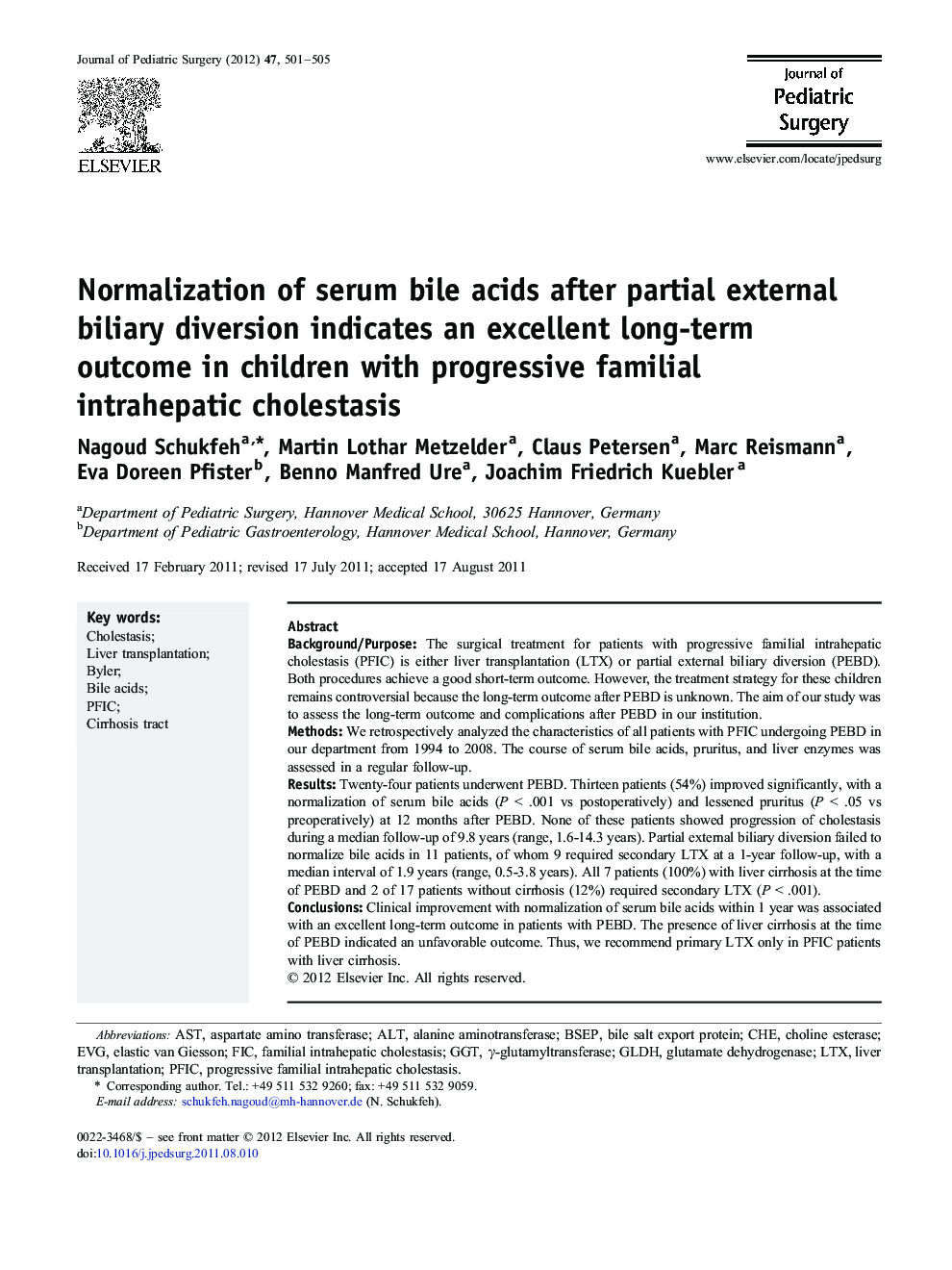| Article ID | Journal | Published Year | Pages | File Type |
|---|---|---|---|---|
| 4157431 | Journal of Pediatric Surgery | 2012 | 5 Pages |
Background/PurposeThe surgical treatment for patients with progressive familial intrahepatic cholestasis (PFIC) is either liver transplantation (LTX) or partial external biliary diversion (PEBD). Both procedures achieve a good short-term outcome. However, the treatment strategy for these children remains controversial because the long-term outcome after PEBD is unknown. The aim of our study was to assess the long-term outcome and complications after PEBD in our institution.MethodsWe retrospectively analyzed the characteristics of all patients with PFIC undergoing PEBD in our department from 1994 to 2008. The course of serum bile acids, pruritus, and liver enzymes was assessed in a regular follow-up.ResultsTwenty-four patients underwent PEBD. Thirteen patients (54%) improved significantly, with a normalization of serum bile acids (P < .001 vs postoperatively) and lessened pruritus (P < .05 vs preoperatively) at 12 months after PEBD. None of these patients showed progression of cholestasis during a median follow-up of 9.8 years (range, 1.6-14.3 years). Partial external biliary diversion failed to normalize bile acids in 11 patients, of whom 9 required secondary LTX at a 1-year follow-up, with a median interval of 1.9 years (range, 0.5-3.8 years). All 7 patients (100%) with liver cirrhosis at the time of PEBD and 2 of 17 patients without cirrhosis (12%) required secondary LTX (P < .001).ConclusionsClinical improvement with normalization of serum bile acids within 1 year was associated with an excellent long-term outcome in patients with PEBD. The presence of liver cirrhosis at the time of PEBD indicated an unfavorable outcome. Thus, we recommend primary LTX only in PFIC patients with liver cirrhosis.
